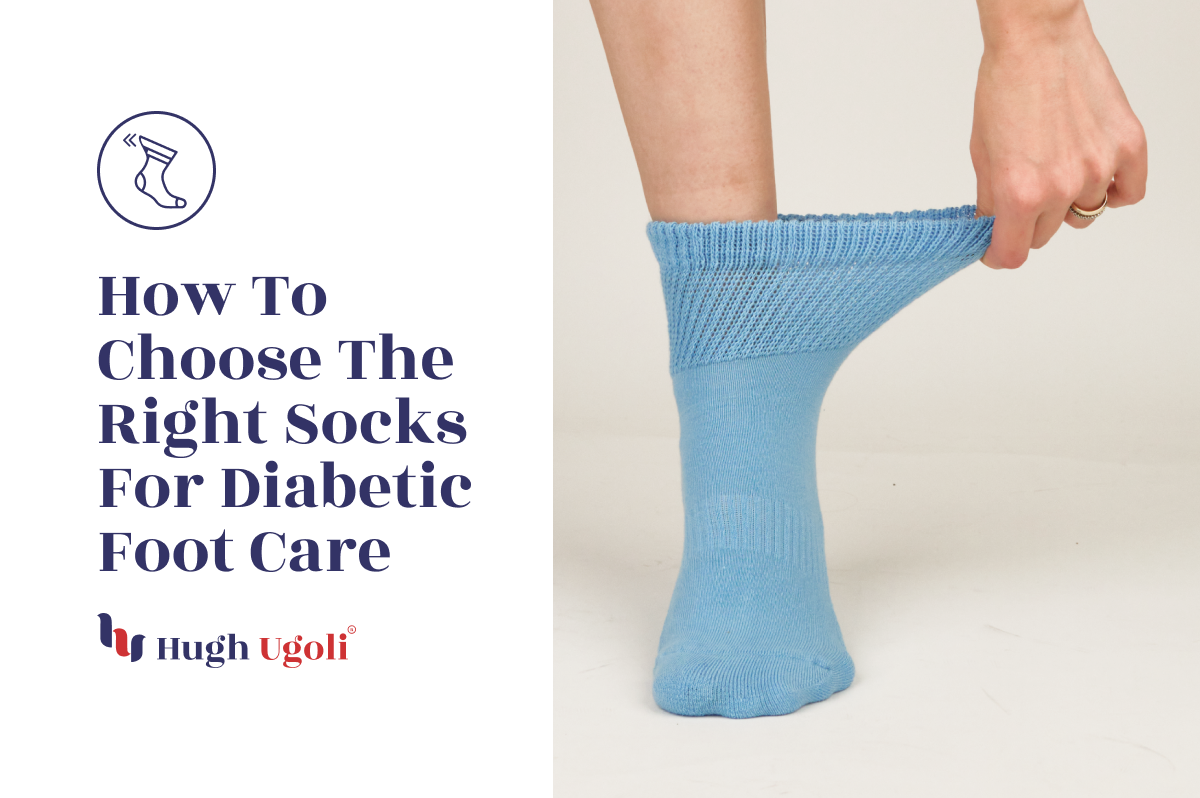Managing diabetes requires meticulous attention to foot care, as the condition can lead to serious complications if feet are not properly cared for. One essential aspect of diabetic foot care is selecting the right socks. Here’s a guide to help you make the best choice.
Importance of Diabetic Socks
Diabetic socks are designed to protect your feet, enhance comfort, and promote foot health. These socks help prevent injuries, reduce moisture, and improve blood circulation, which is crucial for people with diabetes who are prone to nerve damage and poor blood flow.
Features of Diabetic Socks
-
Moisture-Wicking Material: Choose socks made from materials like bamboo or specialized synthetic fibers that wick moisture away from the skin. Keeping feet dry is vital to prevent fungal infections and other complications.
-
Seamless Design: Look for socks with a seamless toe to reduce the risk of blisters and sores. Seamless socks minimize friction, which is essential for sensitive diabetic feet.
-
Non-Binding Top: Select socks with a non-binding top to avoid restricting blood flow. Elastic-free tops are designed to stay up without squeezing the leg, promoting better circulation.
-
Cushioning: Opt for socks with extra cushioning to protect the feet from pressure points and injuries. Padded soles can provide additional comfort and support.
Recommended Products
- Women's Bamboo Diabetic Crew Thin Socks: These socks offer moisture-wicking properties and a seamless design, perfect for daily wear.
- Men's Cotton Diabetic Ankle Semi-Cushion Socks: Ideal for men, these socks provide extra cushioning and a non-binding top for enhanced comfort.
Daily Foot Care Routine
-
Check Your Feet Daily: Inspect your feet every day for any cuts, blisters, or signs of infection. Early detection of problems is crucial for preventing complications.
-
Wash and Dry Your Feet: Wash your feet daily with warm water and mild soap. Ensure you dry them thoroughly, especially between the toes, to prevent fungal infections.
-
Moisturize: Use a moisturizing lotion to keep your skin soft and prevent dryness. Avoid applying lotion between the toes as it can create a moist environment that promotes fungal growth.
-
Wear Proper Footwear: Always wear comfortable, well-fitting shoes that provide support and protect your feet from injuries.
Additional Tips
-
Avoid Walking Barefoot: Walking barefoot increases the risk of cuts and infections. Always wear socks and shoes, even indoors.
-
Regular Check-Ups: Schedule regular foot check-ups with your healthcare provider. Professional evaluations can help detect problems early and provide appropriate care.

Importance of Proper Footwear
Selecting appropriate footwear is essential for people with diabetes. Shoes that fit well can prevent blisters, sores, and other foot injuries. Ensure shoes have enough room, especially around the toes, to avoid pressure and friction.
Monitoring for Early Signs of Problems
Regularly check your feet for early signs of issues. Look for redness, swelling, or any changes in the skin or nails. Early detection can prevent minor issues from becoming serious complications.
The Role of Regular Exercise
Engaging in regular physical activity can help improve circulation in the feet. Walking, swimming, and other low-impact exercises are beneficial for maintaining foot health and overall well-being.
Benefits of Proper Hydration
Keeping your body well-hydrated aids in overall health and can impact your feet. Proper hydration helps maintain skin elasticity and resilience, reducing the risk of cracking and infections.
Conclusion
Choosing the right socks for diabetic foot care is a critical step in managing diabetes effectively. By selecting socks with the right features and maintaining a diligent foot care routine, you can protect your feet from complications and ensure better overall health.
For more insights on diabetic foot care, check out our blog on The Ultimate Guide to Choosing Diabetic Socks: Comfort, Style, and Safety.
















